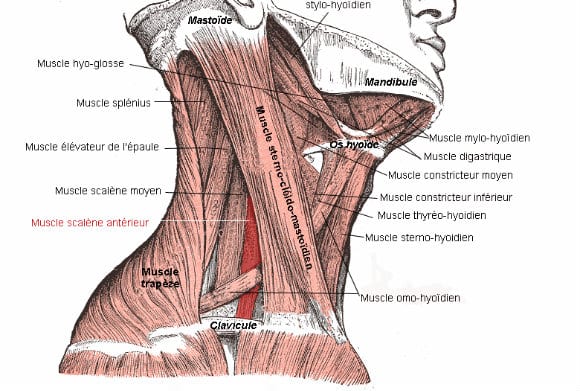By the healthiergang writer , student in Physiotherapy.
Neck Muscles
The neck is an area comparable to the abdominal area. In both situations we find a single "pillar" that gives support to the area. Everything else is supported by a musculature forced to work constantly throughout most of the day.
Nerves branch off from the vertebrae and innervate organs and muscles throughout the body. all this leads us to think that the neck area is a very delicate part and susceptible to excessive stress; in fact this is the case.
The body is built according to principles and needs: the neck has the cervical vertebrae as its only fixed part because it must be able to move the head in practically every direction. Similarly, the abdominals form a sort of support for the viscera but at the same time allow the trunk to be rotated in almost all directions.
The problem in training these areas lies precisely in the delicacy and susceptibility of the same.
1. Why Train Them?
Before going into detail in a proposal on how to train the neck muscles, it is necessary to anticipate that the training of these muscle groups is not something essential.
Surely strengthening the neck muscles creates a visual effect of a more powerful body. It also gives greater stability in the area. On balance, however, there will be few occasions when the neck muscles will be forced to move high loads or support a barbell.

It is difficult to load the head with heavy weights or use the nape or forehead as a support point. Indeed, these situations must be avoided because of what has already been said: important and delicate nerves branch off from the cervical vertebrae.
Since the exercises that involve the neck directly and in an important way are movements that should not be encouraged, the only major reasons for training the area are aesthetic and stability. Once these two guidelines have been outlined, the training will follow these parameters keeping in mind the delicacy of the area.
2. How to train them?
Generally the most profitable exercises for any muscle in the body are closed kinetic chain exercises, in which the muscle becomes an integral part of a movement and plays an important role in this. For example, for the neck, one could think of making the bridge by leaning on the nape of the neck, training the back of the neck in this way.
Another option could be to do a kind of plank where you lean on the forehead. These exercises certainly go to train effectively the cleido mastoid sternum and the other muscles of the neck. The problem is that they stress a weak area with high loads. This means that the rigid tissue of the area, that is the cervical vertebrae, also tend to adapt to the strain they are subjected to.
Consequently, the intervertebral cartilage tends to stiffen together with the muscles. This in the long term leads to damage to the nerves that branch off from the vertebrae, not to mention that an incorrect execution of these movements puts the spinal column at serious vulnerability to hernias or disc protrusions.
This problem is due precisely to the nature of the neck: this area is not made to withstand high loads. So one can imagine that the neck muscles are like the abdominals but much, much more delicate. The solution therefore translates into open kinetic chain movements that stimulate the main functions of the neck muscles. These are flexion and extension in the sagittal plane and flexion and extension along the frontal plane.
3. Exercises
The exercises are simple: place a weight (preferably a disc of appropriate weight) on the forehead, neck or side of the skull and perform the movement against gravity.
As in lumbar and abdominal training, however, there is a very important factor to keep in mind: to secure the spine. For this reason it is necessary to always keep the neck area in a neutral position. This is achieved by straightening the cervical vertebrae and trying to place them in a position where the stress they are subjected to is minimal.
Specifically, this position is achieved by imagining doing the double chin, bringing the jaw area back and staring straight ahead.
This position must be maintained throughout the execution of these movements always focusing on the quality of the repetitions rather than the quantity. Given the nature of the body's postural muscles it is best to opt for low loads and higher repetitions. Specifically, 2 sets per movement of 20 repetitions should be ideal.
Discover our best sellers here.


























